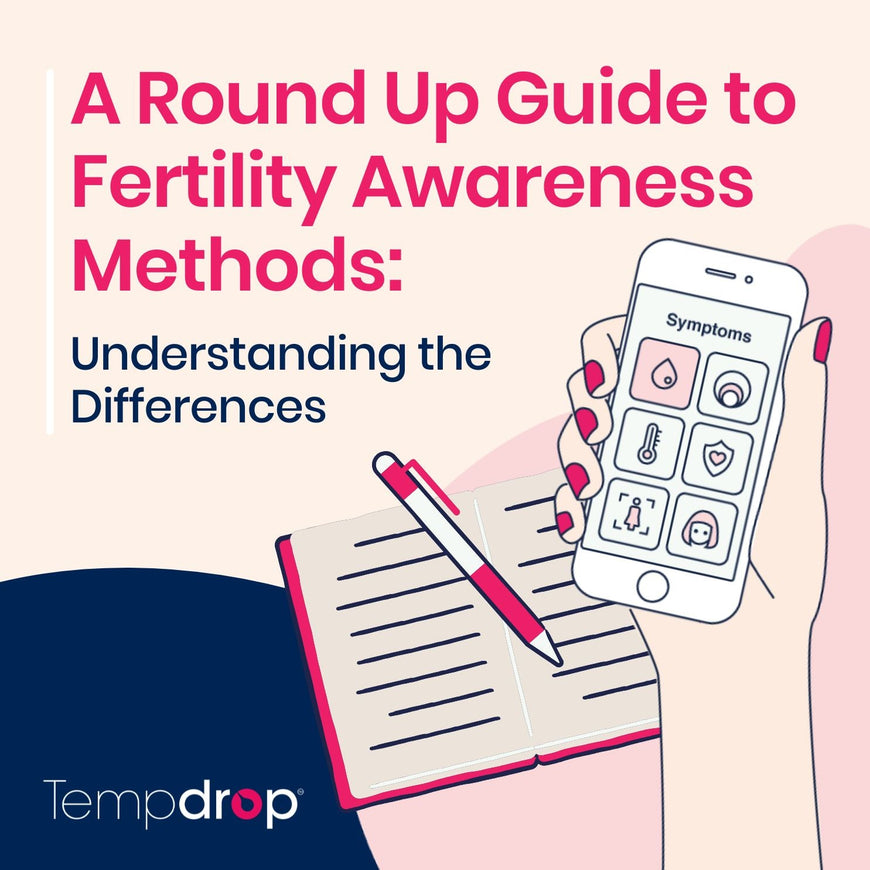Fertility awareness-based methods (FABMs) are natural approaches to tracking fertility by observing biological signs that indicate ovulation. While all FABMs are based on similar principles, they differ in the specific biomarkers they track, their teaching structures, and the tools they incorporate. Understanding these differences can help you choose the method that best suits your lifestyle and fertility goals.
Below is an overview of several well-known fertility awareness methods, highlighting their core principles and the biomarkers they track. You can also dive deeper into each of these methods in more detail with the links provided
1. NFPTA (Natural Family Planning Teachers Association)
The NFPTA method is based on the Sympto-Thermal Method, combining temperature tracking with cervical mucus observations.
Biomarkers Tracked:
-
Basal body temperature (BBT)
-
Cervical mucus
-
Optional: Cervical position
Learn more about the NFPTA method here.
|
Think of the symptothermal approach as an umbrella term—it’s not a single method, but rather a category of methods that all use a combination of temperature, cervical mucus, and sometimes cervical position to track fertility. Different organizations and methods, like Sensiplan, NFPTA, or the Couple to Couple League, all fall under the symptothermal approach, but they each have their own specific rules and guidelines for interpreting the data. It’s like different recipes for the same dish—each one has a slightly different way of measuring and combining ingredients, but they all use the same basic components. |
2. Billings Ovulation Method
This “cervical mucus-only method” relies on identifying patterns of fertile and infertile days based on mucus changes throughout the cycle.
Biomarkers Tracked:
-
Vulvar sensation
-
Cervical mucus
Learn more about the Billings method here.

3. TCOYF (Taking Charge of Your Fertility)
Popularized by the book Taking Charge of Your Fertility, this method is often self-taught and teaches a Sympto-Thermal approach, incorporating multiple fertility indicators.
Biomarkers Tracked:
-
Basal body temperature (BBT)
-
Cervical mucus
-
Cervical position
Learn more about the TCOYF method here.
4. SymptoPro
SymptoPro is a structured Sympto-Thermal Method (STM) that combines temperature tracking with cervical mucus.
Biomarkers Tracked:
-
Basal body temperature (BBT)
-
Cervical mucus
Optional secondary signs:
-
Cervical position
-
Intermenstrual pain
-
Intermenstrual spotting
-
Breast tenderness
Learn more about the SymptoPro method here.

5. Justisse Method
The Justisse Method is a holistic approach to fertility awareness that can be approached in two ways. Either cervical mucus only or the Sympto-Thermal method.
Biomarkers Tracked:
-
Cervical mucus
-
Basal body temperature (BBT) (optional)
Optional secondary signs:
-
Cervical positioning
Learn more about the Justisse method here.
6. Marquette Method
This method integrates traditional fertility awareness tracking with modern hormone monitoring, using the Clearblue fertility monitor for LH and estrogen detection.
Biomarkers Tracked:
-
Hormone levels (via urine test)
-
Cervical mucus
-
Basal body temperature (BBT)
Learn more about the Marquette method here.
7. Sensiplan Method
Sensiplan is a highly researched Sympto-Thermal Method that provides structured guidelines for fertility tracking.
Biomarkers Tracked:
-
Basal body temperature (BBT)
-
Cervical mucus
-
Cervical position
Optional secondary signs:
-
Breast changes or tenderness
-
Mittelschmerz (ovulation pain)
-
Vaginal bleeding between periods
Learn more about the Sensiplan method here.

8. Boston Cross Check
This multi-indicator method incorporates three primary fertility signs, offering flexibility and cross-confirmation for accuracy.
Biomarkers Tracked (2 or more from the following):
-
Basal body temperature (BBT)
-
Cervical mucus
-
Hormone levels (via Clearblue urine testing)
Optional secondary signs:
-
Hormone levels (via Proov urine test)
-
Cervical position
Learn more about the Boston Cross Check method here.
Choosing the Right Fertility Awareness Method for You
Each method has unique strengths depending on individual needs. If you prefer a structured, research-backed approach, methods like Sensiplan or SymptoPro may be ideal. If you're interested in incorporating hormone testing, the Marquette Method or Boston Cross Check might be a good fit. For those who prefer mucus-only methods, Billings or Justisse may be suitable.
Regardless of the method you choose, Tempdrop can be a valuable tool in your fertility tracking journey. By providing reliable overnight temperature readings, Tempdrop simplifies BBT tracking and integrates seamlessly with the majority of fertility awareness methods.
For more in-depth information, check out our detailed articles on each method linked above.

